 Love her and leave her coming after you for revenge. 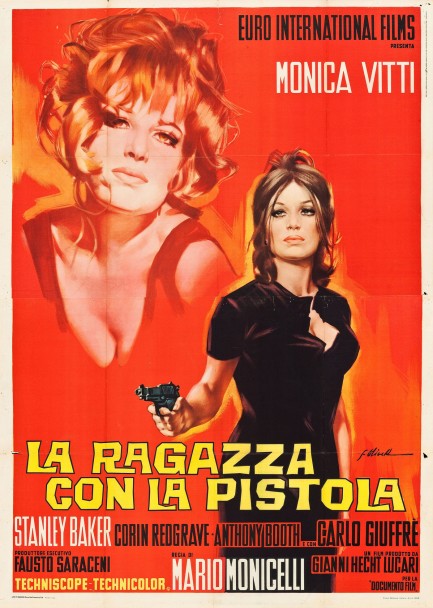
We didn't know La ragazza con la pistola, aka The Girl with a Pistol, was a comedy. Based on this beautiful poster painted by Giorgio Olivetti we never considered the possibility that it was anything other than a crime thriller. But mere seconds into our screening we realized it was a sort of screwball adventure. Sometimes you get fooled. Basically, Monica Vitti plays a Sicilian woman who is devirginized and abandoned by Carlo Giuffrè, is therefore labeled “dishonored” by her family and everyone in her village, and thus feels compelled to chase Giuffrè all the way to Edinburgh to kill him. Giuffrè manages to evade her, forcing her to follow him to Sheffield, Bath, and beyond (as she's tormented by a Sicilian chorus of wailing villagers during interstitial segments). So what you get here is a sort of wacky fish-out-of-water comedy. The movie is also a satire of traditional Italian social values. Though Vitti's character was a virgin, because she gave in to Giuffrè he automatically considers her a whore—that old paradox. Other explorations of outdated gender roles occur, including the idea of aggression versus resistance in romance. And it's eyebrow raising how men in this era—or at least in this movie—don't consider women to have possession of their own bodies. Vitti is pawed, harassed, and kidnapped—for comedic purposes, but still. The idea of using violence to retain honor pops up more than once too. All in all, La ragazza con la pistola is fascinating cultural exploration, legitimately funny in parts, headlined by one of Europe's great vintage stars. It's worth a look—even though it isn't a crime thriller. It premiered in Italy today in 1968.
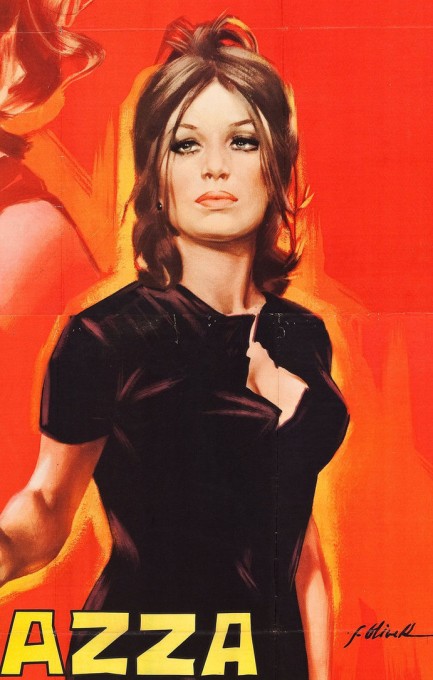 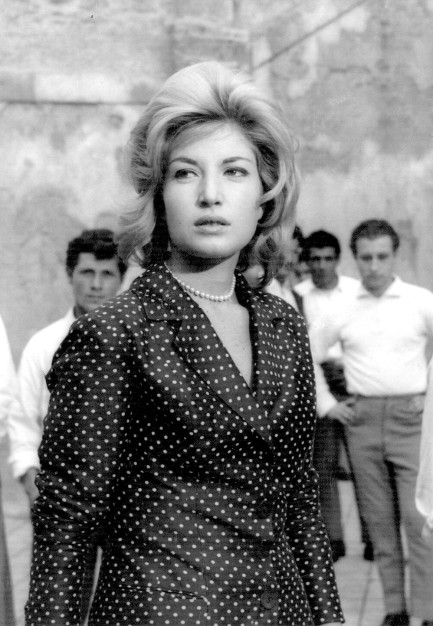 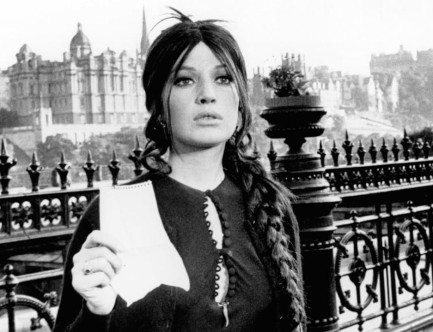 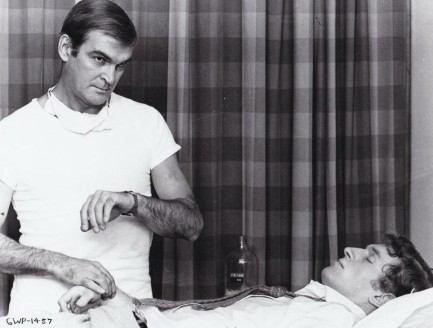 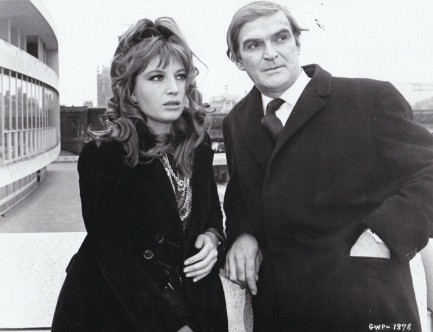 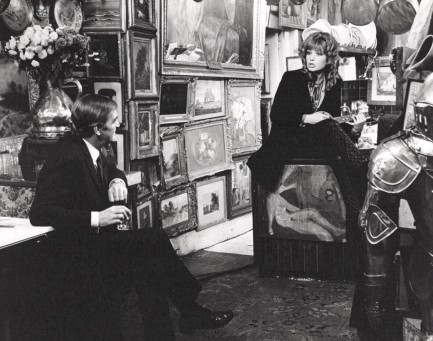 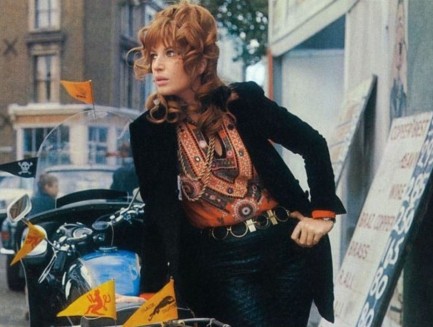 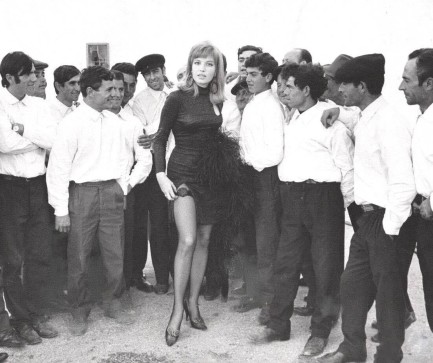
 Even in the height of summer New York City can be a cold, cold place. 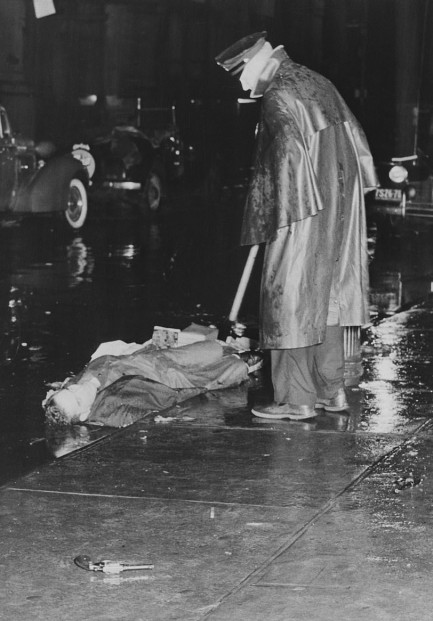
In this photo made today in 1930, a policeman stands over the body of Louis Riggiona, who had been shot twice in the heart by two gunmen as he and his brother Joe exited a restaurant in New York City's Bowery district. Joe fled and avoided injury, while the gunmen dropped their weapons (one pistol is visible in the foreground) and escaped. Louis Riggiona had become the latest casualty in what was known as the Castellammarese War, a Mafia power struggle whose opposing figureheads were Salvatore Maranzano and Joe Masseria. Maranzano was from Castellammare del Golfo, Sicily, thus the name of the conflict. He won the war, but got to be capo di tutti i capi for only five months before he too was murdered.
 Twentieth Century Fox chooses goofs over thrills for Blaise adaptation. 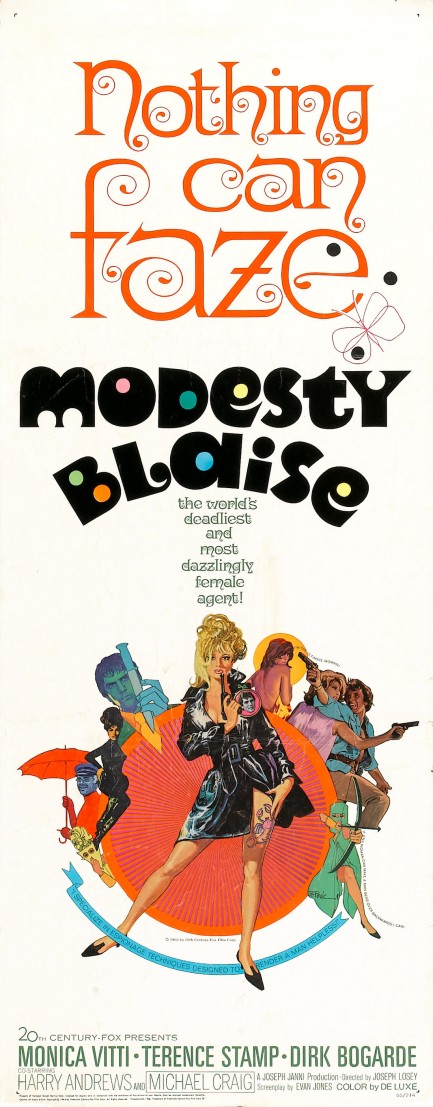
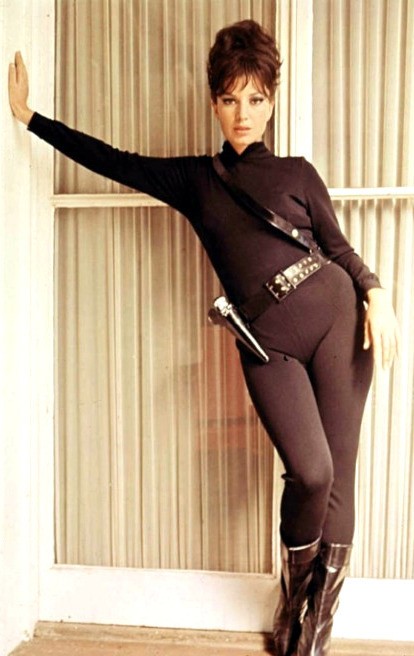 After writing about the first four Modesty Blaise novels over the last few years we figured it was time to talk about Twentieth Century Fox's cinematic pass at character. You see a brilliant poster for the movie adaptation above by Bob Peak, who seems to be reminding people that Robert McGinnis wasn't the only painter capable of working in this style. Two more versions of the poster appear below, and you can another example of his work here. After writing about the first four Modesty Blaise novels over the last few years we figured it was time to talk about Twentieth Century Fox's cinematic pass at character. You see a brilliant poster for the movie adaptation above by Bob Peak, who seems to be reminding people that Robert McGinnis wasn't the only painter capable of working in this style. Two more versions of the poster appear below, and you can another example of his work here.
We'd heard for years that Modesty Blaise is a terrible movie, but it isn't—lightweight might be a better description. It's based on the debut novel, and while author Peter O'Donnell plays it straight apart from the affable relationship between Blaise and her partner Willie Garvin, here in the movie Blaise has a space age apartment, a sentient computer, a huge lobster tattoo on her thigh, an adoptive father, and a referential theme song. The villain, meanwhile, drinks goldfish water, wears a chauffeur's cap, and uses a Japanese pai pai fan. At a couple of points Blaise and Garvin burst into song together. All these touches must have baffled fans of the book, and indeed the additions are pointless in our opinion, but that's cinema. Filmmakers are not transcribers—they're translators, and if you know anything about translation you know it's not done literally.
The main question is whether star Monica Vitti does the legendary main character justice. It was a lot to ask, after Modesty became popular thanks to three years of popular daily comic strips followed by a well received novel. We think she manages fine with the material she's given, but there's the rub. While the screenplay follows the basic thread of the novel, the flow is clunky and the dialogue is cluttered with non-sequitur asides and attempts to be cute that make Vitti resemble Emma Peel from The Avengers rather than the lethal woman O'Donnell created. In terms of the actual story, Modesty is tasked with stopping a master criminal from stealing a cache of diamonds meant for her father (we know, we know—she's an orphan in the books, and it defines her character). She's had dealings with this quirky crook before and would like to settle matters between them permanently. That means traveling from London to Amsterdam to his rocky stronghold on Sicily for a final showdown—in good pumps and a diaphanous haute couture a-line dress.
The action, which is central to the books and written with deadly seriousness, is mostly played for laughs. We mean even to the extent of villains crashing into each other to the accompaniment of circus music. We think this is probably the movie's only unforgivable sin. O'Donnell took pride in his action sequences, underpinning them with ingenious forethought by Blaise and Garvin and violent precision in execution. All the humor and cuteness would have been fine if the movie had thrilled where it most needed to, but no such luck. So in the end what you get is a cutesy spy caper of a type that was all too commonplace during the 1960s, but even goofier than most. We think the movie should have been something fresh and surprising, and in ways that go beyond its glossy high fashion aesthetic. Unfortunately, the final result is no better than watchable, though it becomes progressively more enjoyable the more booze that's ingested. Hit the liquor store before screening it and you'll find out for yourself. Modesty Blaise premiered in London today in 1966.
  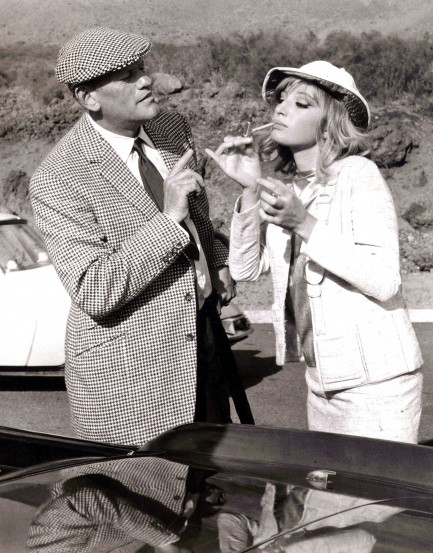 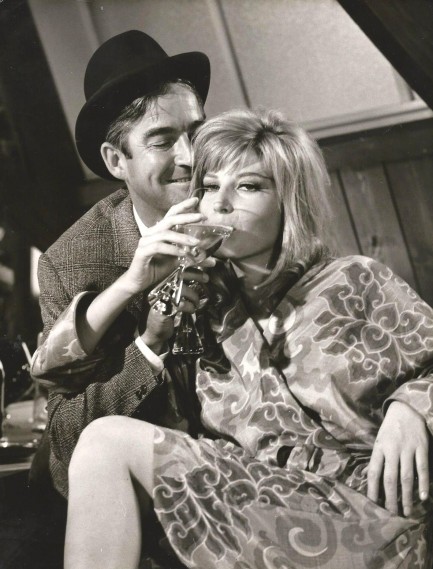  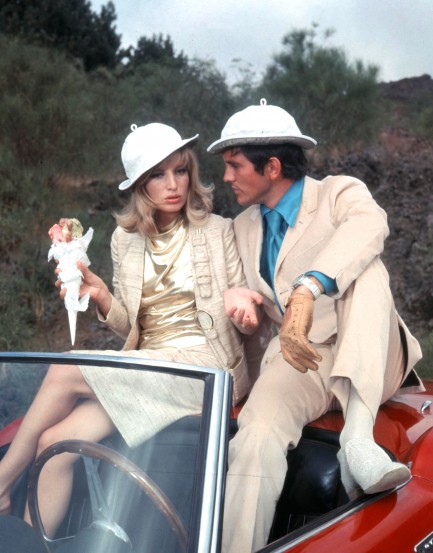 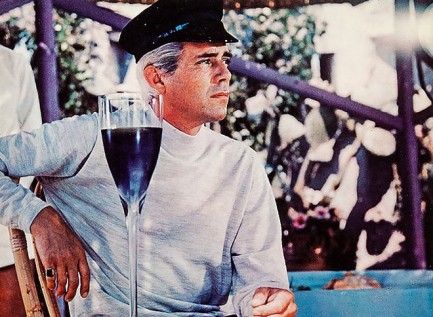 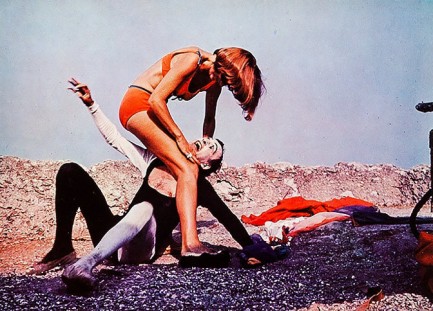 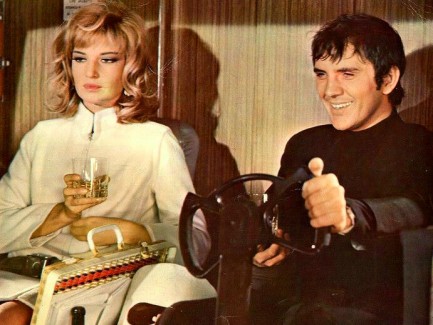 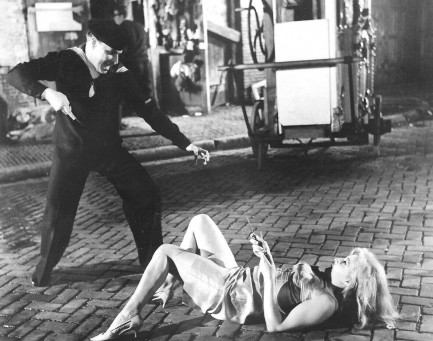 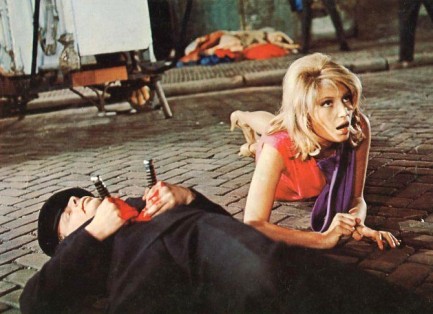 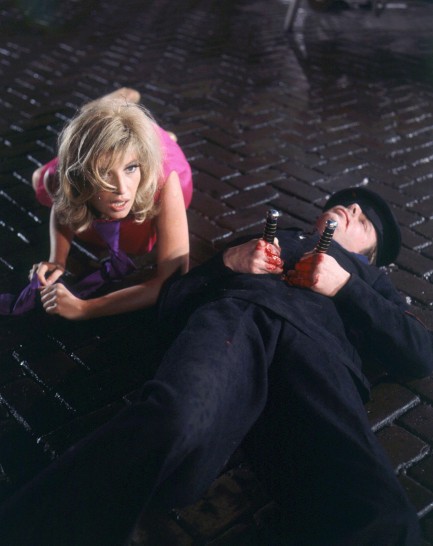 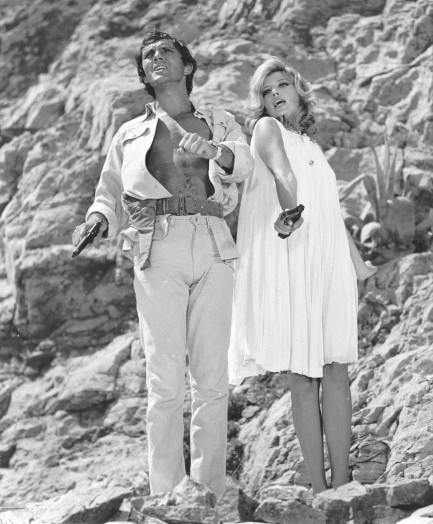  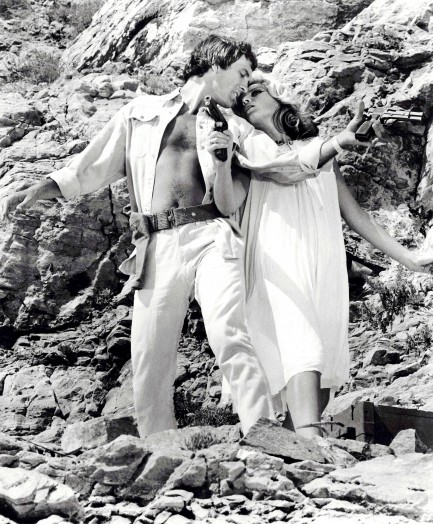  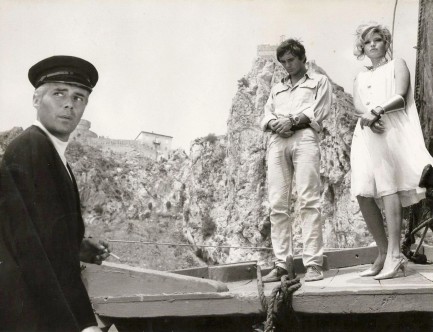 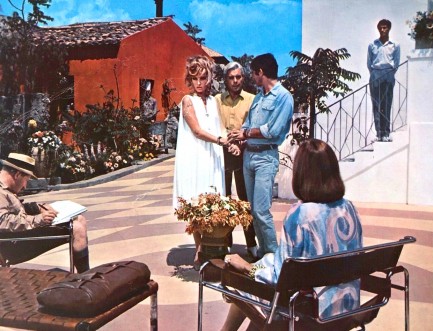 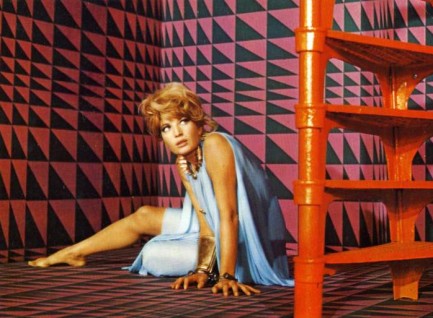 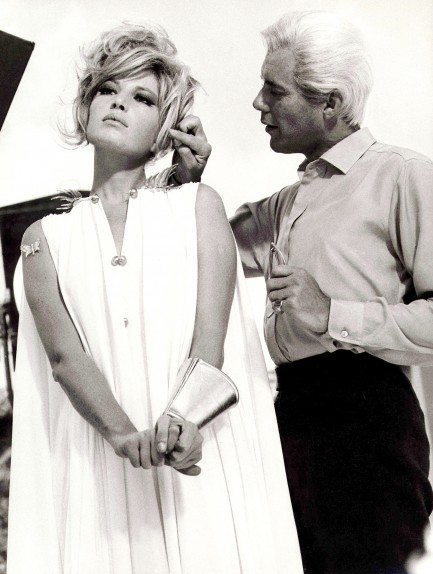  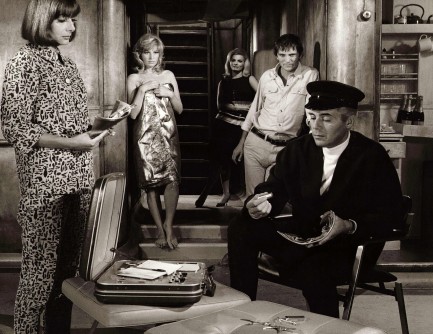   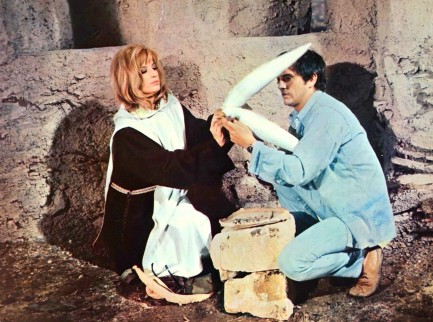 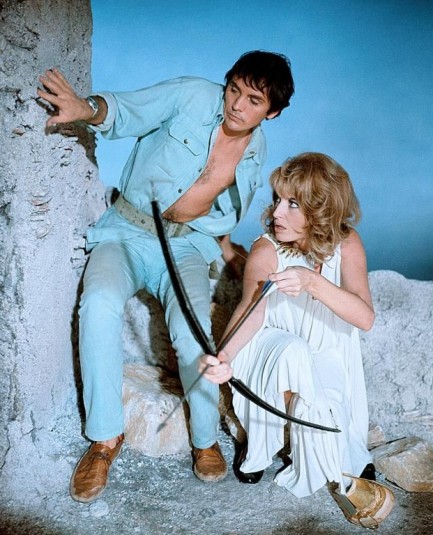 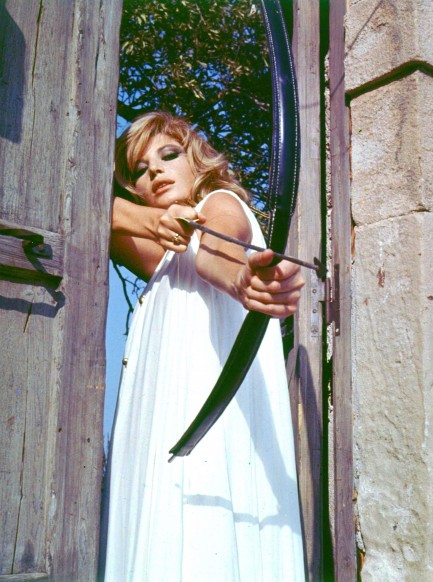 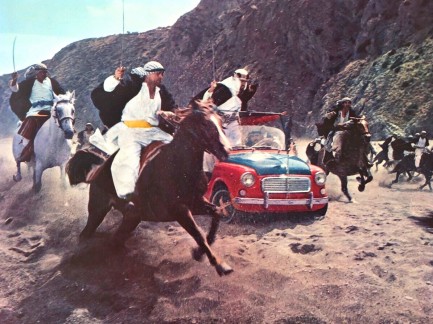 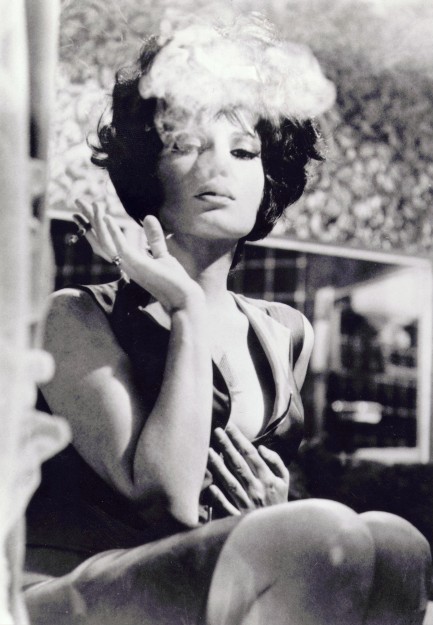 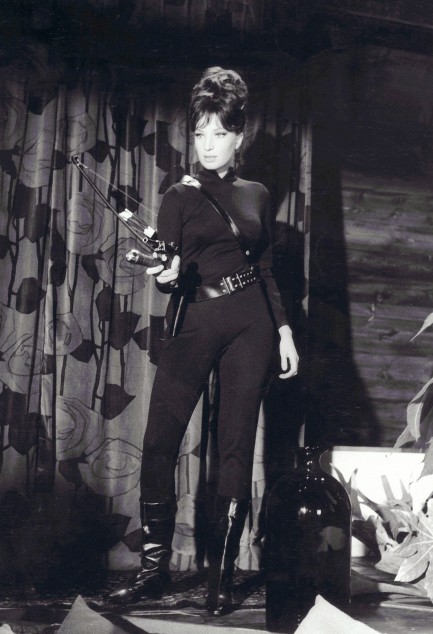 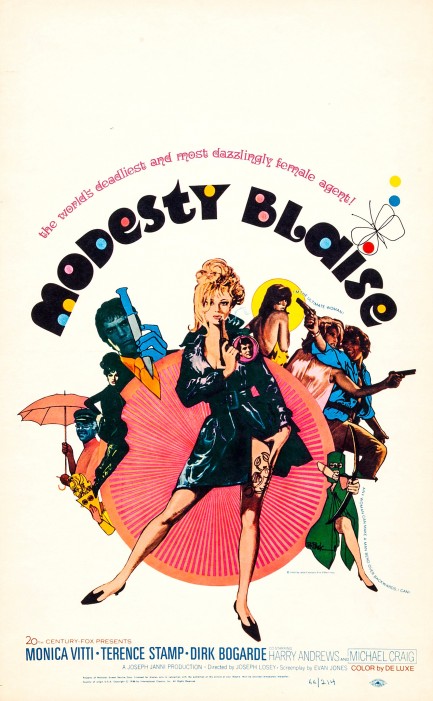 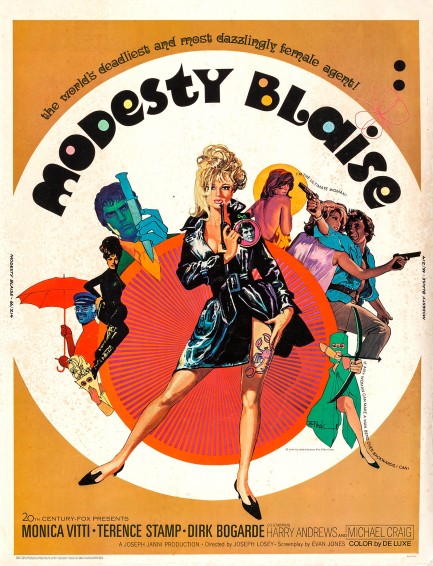 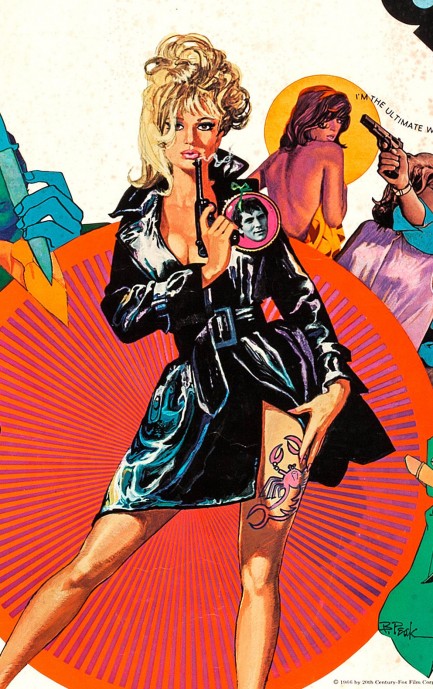
 It's minimal but I figure when the climate finishes changing this'll qualify as overdressed. 
Above you see Sicily born Italian model and actress Pia Giancaro, who won the 1968 Miss Sicily contest, competed for Miss Italy, and parlayed the exposure into a foothold in cinema, where she appeared in such films as Se t'incontro t'ammazzo, aka Finders Killers, and La dama rossa uccide sette volte, aka The Red Queen Kills Seven Times, aka Blood Feast. This futuristic photo was published on the cover of the Belgian film and television magazine Ciné-Revue in 1977. It actually dates from a 1974 photo session, when the magazine used a different shot from the same series. Ciné-Revue gave Giancaro a lot of attention over the years, with multiple covers, and a couple of centerfolds, one of which you can see here.
 That's fine, mister—I want the other one anyway. Before the school got bombed she was my sex ed teacher. 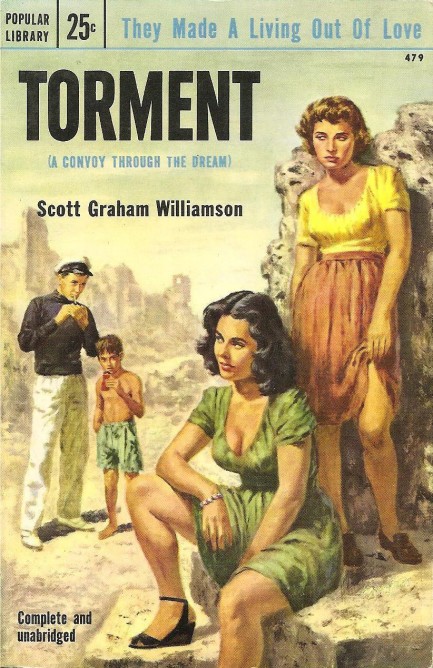
This cover depicting a grown man and a pre-teen boy browsing a pair of working girls is kind of creepy, we know, but it's also well executed. Originally titled A Convoy Through the Dream and published in 1948, Torment appeared in this Popular Library edition in 1953. Author Scott Graham Williamson tries for Hemingway with a story set in various sites around the Mediterranean during World War II, including Gibraltar, Algeria, and particularly Palermo, Sicily. Basically, a radio officer on a warship and his wife try to maintain their love and fidelity in a time of chaos and separation. This comes complete with that familiar war novel plot device—one last incredibly dangerous mission before the hero can go back home. The cover art is uncredited.
 They got wet and I suppose they shrank when they dried. But they still look okay, n'est pas? 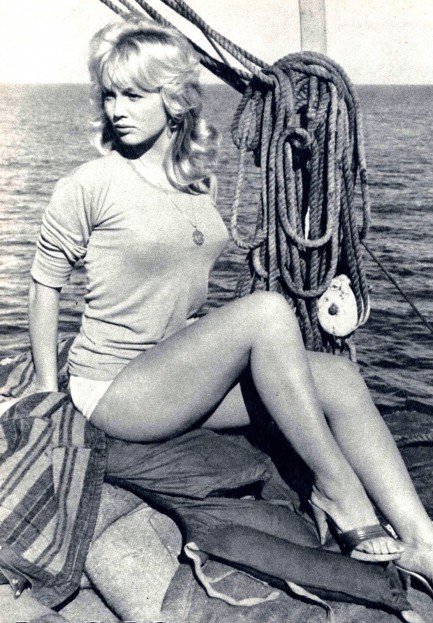
French vision of perfection Mylène Demongeot takes a break while filming the World War II drama Sotto dieci bandiere, aka Under Ten Flags in the Ionian Sea off the coast of Sicily in 1960. She's dressed in character as Zizi, a name we really love, and you're surely wondering how the filmmakers managed to fit a blonde sexpot wearing white spray paint for shorts into a war epic. Well, let's just say if you get all the other historical elements correct, adding a little sex appeal is Zizi. Below you see her putting the legs that launched a thousand fantasies into action, during a scene from the film in which she climbs aboard a boat using a cargo net and miraculously doesn't throw a shoe. You'd think one of those sailors would give her a hand, but then again, maybe that's just not possible. Some say Demongeot is no Bardot. We agree—she's all that and more. 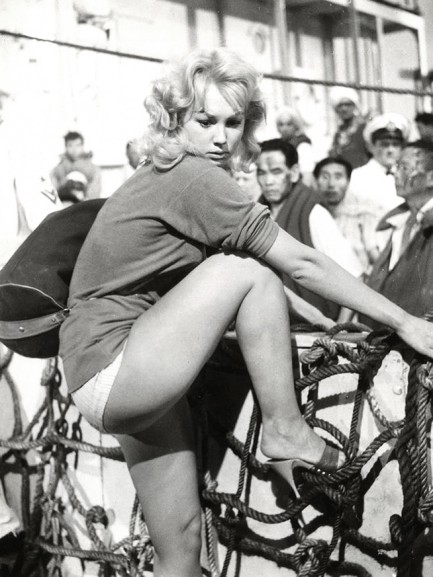 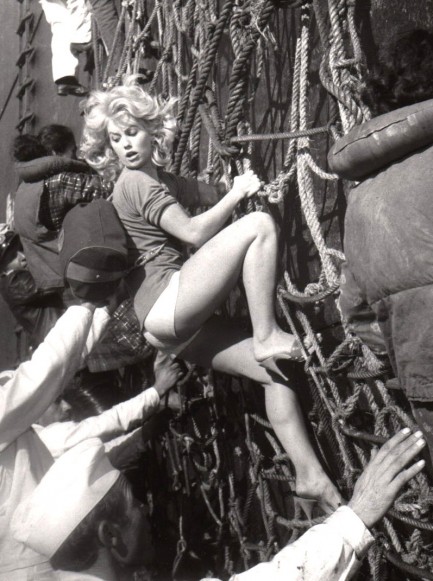
 Matteo Messina Denaro’s plan to rebuild Cosa Nostra is derailed by arrests. 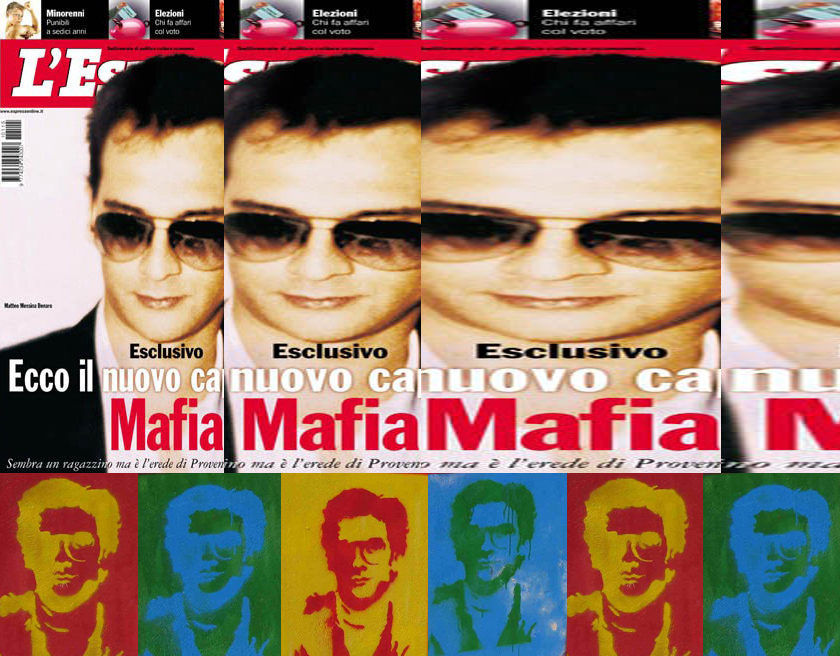
Italian police carried out a large raid today against organized crime figures suspected of having links to gangster Matteo Messina Denaro. Denaro, along with other aspirants, is vying to be the first to rebuild the Sicily-based Cosa Nostra, which collapsed after the 2006 arrest of then-boss Bernardo Provenzano, and the 2007 arrest of heir apparent Salvatore Lo Piccolo.
Altogether, police made around 100 arrests in the Sicilian capitol of Palermo, and on the Italian mainland in the Tuscany region. The operation, nicknamed Perseus after the mythical Greek hero who killed Medusa, was carried out with the backing of helicopters and police dogs, and was the culmination of a nine-month investigation. Those jailed will be charged with variety of offences, including extortion of arms and drug trafficking.
Anti-Mafia prosecutor Pietro Grasso said at a press conference that, “While the 2006 operation had brought Cosa Nostra to its knees, Perseus prevented it from rearing its head again.” Meanwhile Denaro, who is sometimes described as a playboy and is famous enough to have earned a L’Espresso cover and an infamous Warhol-style tribute from an anonymous Italian graffiti artist, remains at large.
|
 |

The headlines that mattered yesteryear.
1945—Churchill Given the Sack
In spite of admiring Winston Churchill as a great wartime leader, Britons elect
Clement Attlee the nation's new prime minister in a sweeping victory for the Labour Party over the Conservatives. 1952—Evita Peron Dies
Eva Duarte de Peron, aka Evita, wife of the president of the Argentine Republic, dies from cancer at age 33. Evita had brought the working classes into a position of political power never witnessed before, but was hated by the nation's powerful military class. She is lain to rest in Milan, Italy in a secret grave under a nun's name, but is eventually returned to Argentina for reburial beside her husband in 1974. 1943—Mussolini Calls It Quits
Italian dictator Benito Mussolini steps down as head of the armed forces and the government. It soon becomes clear that Il Duce did not relinquish power voluntarily, but was forced to resign after former Fascist colleagues turned against him. He is later installed by Germany as leader of the Italian Social Republic in the north of the country, but is killed by partisans in 1945. 1915—Ship Capsizes on Lake Michigan
During an outing arranged by Western Electric Co. for its employees and their families, the passenger ship Eastland capsizes in Lake Michigan due to unequal weight distribution. 844 people die, including all the members of 22 different families. 1980—Peter Sellers Dies
British movie star Peter Sellers, whose roles in Dr. Strangelove, Being There and the Pink Panther films established him as the greatest comedic actor of his generation, dies of a heart attack at age fifty-four.
|

|
|

It's easy. We have an uploader that makes it a snap. Use it to submit your art, text, header, and subhead. Your post can be funny, serious, or anything in between, as long as it's vintage pulp. You'll get a byline and experience the fleeting pride of free authorship. We'll edit your post for typos, but the rest is up to you. Click here to give us your best shot.

|
|














 After writing about the first four Modesty Blaise novels over the last few years we figured it was time to talk about Twentieth Century Fox's cinematic pass at character. You see a brilliant poster for the movie adaptation above by Bob Peak, who seems to be reminding people that Robert McGinnis wasn't the only painter capable of working in this style. Two more versions of the poster appear below, and you can another example of his work here.
After writing about the first four Modesty Blaise novels over the last few years we figured it was time to talk about Twentieth Century Fox's cinematic pass at character. You see a brilliant poster for the movie adaptation above by Bob Peak, who seems to be reminding people that Robert McGinnis wasn't the only painter capable of working in this style. Two more versions of the poster appear below, and you can another example of his work here.














































































































